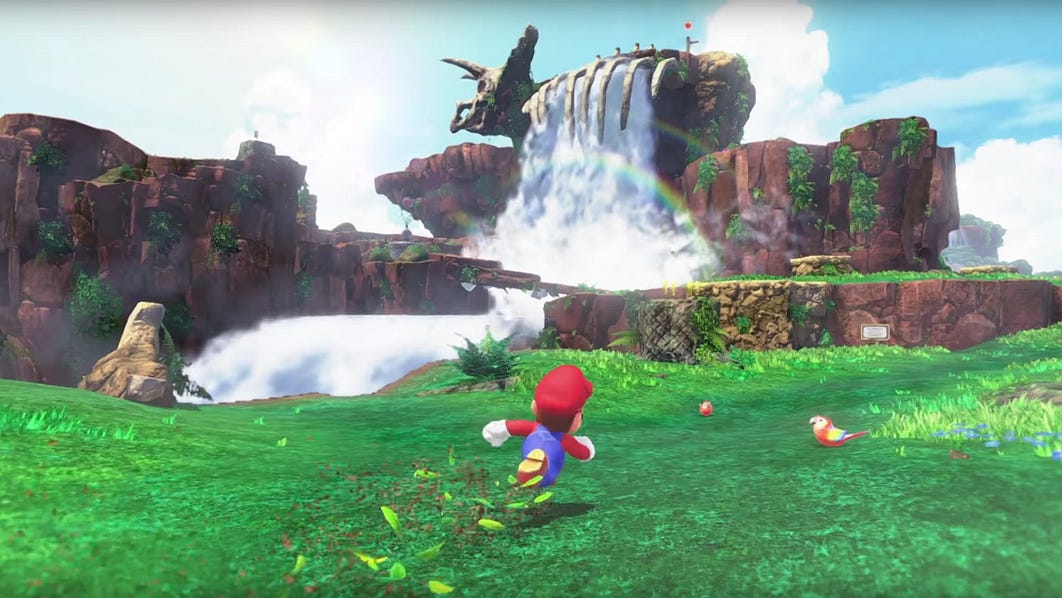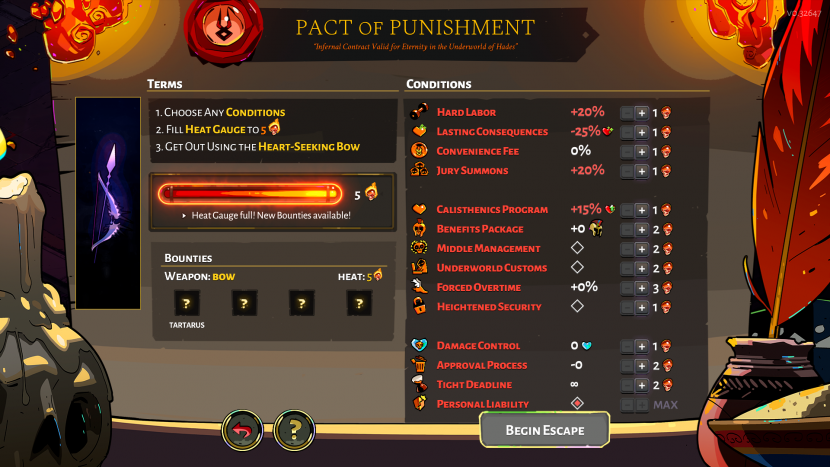
Featured Blog | This community-written post highlights the best of what the game industry has to offer. Read more like it on the Game Developer Blogs or learn how to Submit Your Own Blog Post
Debating Difficulty in Game Design
The debate over difficulty in videogames continues to rage, and for today's post, I want to try, once and for all, to explain that difficulty is not a part of accessibility, but an essential element designers need to take note of.


Videogames are always about progression, and one of the major forms of that is with increasing the difficulty throughout a title. The difficulty curve of a game is a hard concept to do right and one that requires more thought than just making everything easier or harder, and with the recent debates continuing about the difficulty in games, it’s time to have a little talk.
Progressing in Difficulty
For this post, we’re not talking about accessibility hurdles in a game — as every game should be built around accessibility features — but the inherent challenge of a game’s design. Any videogame must have some degree of a difficulty curve from beginning to end, as without progression growth, a game is not going to hold the attention of someone to get through it. There are two areas where developers will often mess up when it comes to the difficulty growth in their game.
The first is with having early spikes that are beyond the rest of the game. These are examples where the game starts out a lot harder than the rest of the game; this could be due to a lack of resources or events that are beyond the scope of the rest of the game. Resident Evil Village’s opening Lycan attack is something that is never repeated at that level of ferocity, and the player literally doesn’t have the health, resources, or weapons to be able to adequately protect themselves. If you’re playing the game on hardcore and up, it’s damn near impossible to do it safely without exploiting something in the area. To build off that, the entire first quarter of RE8 is far harder than the rest of it due to the lack of ammo and weapons, with the bulk of your gear and upgrade systems locked until after you beat the castle.
Another aspect is having a frustrating start, or pain points right out of the gate that frustrates people. Hollow Knight may be one of the best metroidvanias released last decade, but it had a huge churn rate and lost 32.3% of its player base (at the time of writing this) within the first hour of playing and not beating the first boss. The lack of an easy map system could have been the culprit, but without talking to players, it’s hard to tell what drove them away.
That reverse difficulty is often something we see in games that have an issue with balance. With that said, some would argue that Soulslikes are a bad example because they typically start harder and end easier. The difference is that balance is based on the player themselves. The quicker someone understands how combat works in a soulslikes, the faster they’re going to get through the game. Examples like RE8 are just a straight-up spike in difficulty. You can certainly have spikes in difficulty when introducing a new element or mechanic, but those should be relatively short-lived spikes.The other problem is if the game’s difficulty peters out. Progression in a videogame is about things growing. No one wants to play the same exact level or do a mechanic the same way repeatedly.
Without new ways of interacting with the game or challenging the player, the game will become boring, and people are going to stop playing. This is often an issue with RPG-based design or puzzle games that can often be played the best by relying on a specific set of actions or strategies. Once someone “figures out the game” and realizes that there’s nothing else left to find, most likely they’re going to stop playing with exception to completionists. What you want to see as a developer is that while the overall progress from your player base begins to dip the longer the game gets, it is a gradual decline, not giant lost rates between major progression points.
You may have noticed something with the last two paragraphs, I pointed out issues of games introducing too many difficult elements, and those that feature too few. Figuring out how to balance your game through difficulty is kind of difficult.
Rating Difficulty
Getting the difficulty curve of your game right is about understanding how your various elements relate to each other in terms of it, and this is very hard to judge. There are two factors to every mechanic that are weighted in terms of complexity and difficulty:
How does someone perform it?
What kind of obstacles can be set up against it?
Let’s take platformers as an example. In Celeste, the player is constantly challenged to perform all manner of platforming. The major mechanics in the game are the abilities to jump, climb up walls, and dash. Of the three, jumping would be the easiest for players to understand while getting the timing and momentum for dashing would be the hardest.
However, performing a dash to clear a wide gap is far easier compared to jumping around obstacles onto character wide blocks. Basic game design and structure dictates that the best way of teaching someone your mechanics is to go through this process:
Introduce a new mechanic or hazard separate from anything else. For mechanics, the first use of it should be in a completely safe area where the player cannot die
Put the player in a situation where they can fail if they don’t properly use the new element
Integrate the new element fully into the rest of the mechanics and hazards.
The third point is one to take note of because this is how developers will often “raise” the difficulty of a game without increasing it. When it comes to difficulty in any game, it is impossible to infinitely keep raising it up. The reason is that at some point the game will become so difficult that no one will be able to play it, and why you need to consider the skill ceiling of your game that I’ll discuss next.
Nintendo has always been a good example of the third point and has only gotten better at it with the switch to 3D. Each Mario game gives the player access to all of Mario’s movement tech from square one but formally introduces it as a requirement for progress slowly over the course of playing. The platforming and level design do not always get harder in a “raising the number” sense, but the developers are simply requiring more of Mario’s abilities at any given time. Mastering Mario’s skills is quite difficult, and you can see this whenever Nintendo has their “final test” level that is the absolute highest their skill ceiling will go. Despite only having three major mechanics, Celeste gets very difficult in terms of combining the three to solve the various obstacles. Elements like the wall jump dash or “wavedashing” are advanced elements that are required near the end of the game.

Celeste’s progression requires a lot of advanced platforming tech that led to high churn rates of players
Enemies/obstacles can also be used in the same way — with many action games shuffling what enemies will appear and where to raise or lower the difficulty of an encounter. You need to weigh the threat level of the obstacle alone, and what it’s like when combined with other things.
Dodging one single projectile is easy; dodging 5 of them while the lights are flickering and they home in on the player is another matter. In Doom Eternal, fighting a marauder in an open area with a few zombies nearby is not the same as fighting a marauder, tyrant, and archvile all at once. One thing to note, new enemy encounters only work if the enemies are distinct enough that the player must adapt to different strategies. In Control, outside of the boss fights, the normal encounters never feel like they’re testing the player due to the basic behaviors of the AI and their overall tactics.
The Skill Floor and Ceiling
To understand the difficulty of your game, you need to grasp the concepts of the skill floor and skill ceiling in relation to your core gameplay loop. Any videogame released, and will ever be made, has a skill floor — or the lowest skill level required to start playing it.
When fans come to a genre they know, their skill level should be by default higher than your skill floor. However, being a good designer is knowing what elements would be frustrating or barriers of entry for people not used to the genre and designing your game to get around them. This is part of user interface and user experience design (UI/UX) that is essential in any videogame and why good onboarding matters.
For the skill ceiling, this is the absolute highest amount of skill needed to see the end of your game’s story. Seeing the end of the story is not the same as seeing everything included in a title. There are plenty of games that have content beyond the end credits, and this is often where we see expert-level challenges appear. The higher you set your skill ceiling in relation to the skill floor, the fewer people will be able to clear it. This is one of the reasons why drop-off occurs so much around difficulty spikes in games: the consumer gets to a point that they’re stuck, can’t see a way through, and stop playing.
Incidentally, both From Software and Nintendo are really good when it comes to establishing their skill floors and ceilings for different reasons; this was part of one of my first formal game design essays I wrote. Nintendo is amazing when it comes to onboarding and designing game spaces for multiple skill levels to approach the game in different ways. This allows them to teach someone the mastery of the game while not punishing or slowing down someone who already knows the basics. By the time you reach the standard end of a Mario title, the beginners who were right at or below the skill floor should be at the skill ceiling for the main content.

Nintendo’s level design is built around having multiple ways of progressing based on the player’s skill level
Dark Souls goes for a different approach, and why it’s often incorrectly pulled into these conversations on difficulty. The skill floor of Dark Souls, or a soulslike, is higher compared to similar games of the same genre. Oftentimes, the bulk of the player churn occurs within the first hour of playing; specifically, the first formal boss fight. However, the skill ceiling for these games does not go much higher than the skill floor. If you can grasp the basics of a soulslike, most likely you can finish the game or at least go far in it. The core gameplay loop is intriguing enough that people who get it and get past the dropout points will oftentimes go further in the game compared to other games. Even titles that appear to be more player-friendly, they can have worse churn and a lower clear rate than the soulsborne series. According to Steam, the completion rates for Dark Souls 1, 2, and 3, sit at 28, 30, and 22.9 respectively at this time of posting. With all that said, there is one final point we need to talk about when it comes to difficulty and game design.
The Difficulty Debate
As I was writing this piece, a new competitor to the argument came in with the announcement of Psychonauts 2 having an invincibility mode to try and promote accessibility with the game. This led once again back to the argument of whether difficulty is an accessibility hurdle.
I’m hoping that with this section, we can finally put this argument to rest — difficulty is not a part of accessibility debates, but one of approachability. Conflating the two is often done by people who don’t understand the act of balancing game design.
At the heart of every videogame is the core gameplay loop, and as part of the design process, the developer needs to be thinking about the skill curve of their game as much as the moment-to-moment gameplay. Accessibility features are always welcomed and should be in your game, but they will not save a game with a poor UI/UX or problematic core gameplay loop. You should be thinking about accessibility options as early into development as you can, but that does not mean you ignore the playability of your game.
By understanding the skill floor and skill ceiling of your game allows you to do two things: Understand what the baseline experience looks like, and from there, figure out ways to make things easier or harder for people who need it. Good difficulty design is not about stat tweaks but figuring out interesting ways to make your game more approachable for people who want it, and more challenging for those looking for it. Blanket difficulty modifiers are the worse ways of trying to add difficulty settings; stat changes do not change the core gameplay loop or moment-to-moment experience.

Designing your game with the difficulty and progression curve in mind often leads to more approachable games
I saw someone on Twitter talk about how they didn’t care about difficulty settings and only playtested their game with invincibility mode on, and that is an easy way to lead to an imbalanced game. Going back to Psychonauts 2 for a second, while invincibility mode is a useful feature, if the game is heavy on platforming, it will not help people who have trouble with those kinds of challenges. I remember playing Super Mario Galaxy 2 and I got stuck at a section so long that they wanted to offer me the invincibility hat, but the problem was about platforming and making a specific jump, so having that did nothing for that part.
When I spoke with Steven Spohn from Ablegamers about accessibility, he talked about how there is no one size fits all for accessibility in games — each game must be handled differently based on the gameplay in it. And to do that, you must understand how someone plays your game and what are any potential pain points. Without that, all the accessibility in the world is not going to motivate someone to keep playing a game if someone is frustrated with it or a game has UI/UX issues. As an example, Celeste, despite having an assist mode, has a lower clear rating and higher churn rates than Dark Souls 1 among its fanbase, sitting at 10.4% for “Say Goodbye” which was the final level of the base game or 19.8% for clearing chapter 8 normally. Whereas Ori and the Will of the Wisps has one of the higher clear rates I’ve seen sitting at 43.7% of its fanbase on Steam (all percentages based on the time of writing).
A favorite example of mine of understanding approachability would be Legend of Zelda Cadence of Hyrule, a rhythmic take of a Zelda game. They could have just put in an easy, normal, and hard setting to make the game more approachable. Instead, they knew people may have trouble with the rhythm and beat timing (like me) and put in an option to disable the beat timing and play the game as a turn-based game.
If you fail to understand the skill curve and pain points of your game and try to add in difficulty settings, what ends up happening is that any problems with your core gameplay loop will be harder to find on the lower settings and made more apparent on the higher ones. Not understanding why people stop playing your game can lead to trouble if you fail to learn those lessons for your next game and find that far fewer people are interested in playing it. Therefore difficulty is not a part of accessibility, but about making your game more approachable, and the best examples are those that integrate difficulty design into the core gameplay loop.
I’ve already talked about games like Way of the Passive Fist and Hades as ways of doing it right. By allowing the player to directly control not only the overall difficulty but what aspects of the core gameplay loop that are hard, it gives them a better sense as to their own mastery and is able to adjust things to their level. The modifiers in The Last of Us 2 would also be a good example of it. By allowing the player to personally tailor their experience based on their skill level, it allows them far more control to get the game to feel just right and makes it more approachable for a larger audience.
Again, the difficulty of a title is a part of the design process, whether developers or journalists want to admit it or not. The goal of approachability isn’t to turn off game systems to let people play your game, but to improve your design so that they want to engage with the core experience of your game. If someone’s only way of playing your game is to disable systems and mechanics or play on the “story mode”, that’s not a failure of them, that’s a failure of you as a designer.
For the reader, can you think of a game that I didn’t mention that went above and beyond in terms of difficulty design or approachability elements? Let me know in the comments.
If you enjoyed my post, consider joining the Game-Wisdom discord channel. It’s open to everyone.
Read more about:
Featured BlogsAbout the Author(s)
You May Also Like







.jpeg?width=700&auto=webp&quality=80&disable=upscale)



.jpg?width=700&auto=webp&quality=80&disable=upscale)




